The first step to playing a piano piece is to know where to place your hands on the piano and in what position. It may seem confusing as to where to place your hands at first, but it actually is pretty simple to determine just where your hands should be on the keyboard and how to hold your hand in the proper position.
Your hand position on the piano should be with curved fingers as if resting on a ball with your wrists slightly raised to form a straight line. Each finger will rest on its own key in proper hand position. Place your hands on the piano in the position of the key signature you will be playing.
Let’s take a closer look at the proper hand position and just exactly where you should place your hands on the piano.
Proper Hand Position for Playing Correctly

The proper way to hold your hand position on the piano is to have your hand placed gently on the piano. It is helpful to hold a ruler from your arm to your wrist to see how your wrist should be in alignment from your hand to your arm.
The fingers are curved, as if there is a bubble or a ball underneath your fingers. The tips of your fingers will be what comes in contact with the keys of the piano.
As you play the piano and press down on the keys with your fingers, it is tempting to allow your fingers to flatten. Keep your fingers curved. You will want to keep your fingers curved so that you will be able to move your hands freely up and down the piano. It is easier to cross your fingers over and under in a curved hand position.
After you have the proper hand position, you will need to know where to place your hands on the piano before you begin playing. What keys do you place your hands on?
Some of the most common hand positions, especially for beginners, are the C position and the middle C position. It’s pretty easy to find other common positions according to the key signature of the piece you will be playing, and we will teach you exactly how to do that.
The Middle C Hand Position on the Piano
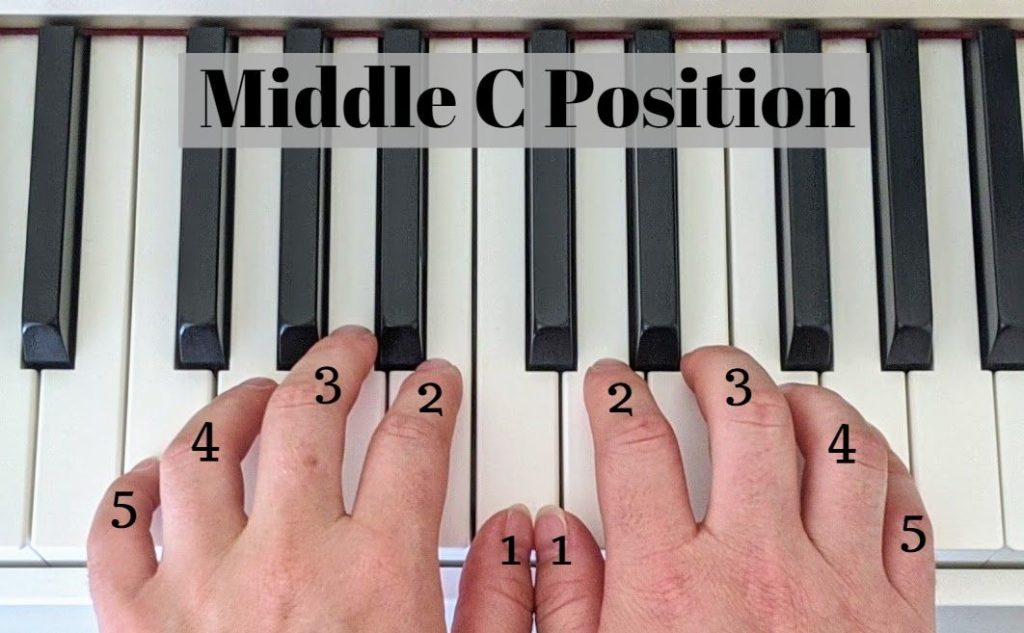
The middle C hand position is one of the earliest hand positions a student will learn. Thus, the middle C position is usually reserved for primer to early beginner students. The hand position is simple, yet can feel a little awkward at first. Both hands begin with their thumbs on middle C. Each finger is placed on the next white key, so that the hand is rested comfortably on the piano.
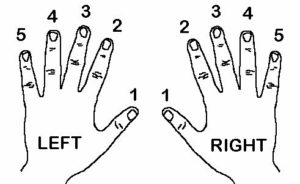
In case you need a refresher, middle C is found in the middle of the piano, usually under the brand name of the piano if you are on an acoustic piano.
For younger students, this position could be called the butterfly position because the hands are placed in such a way as to look like a butterfly.
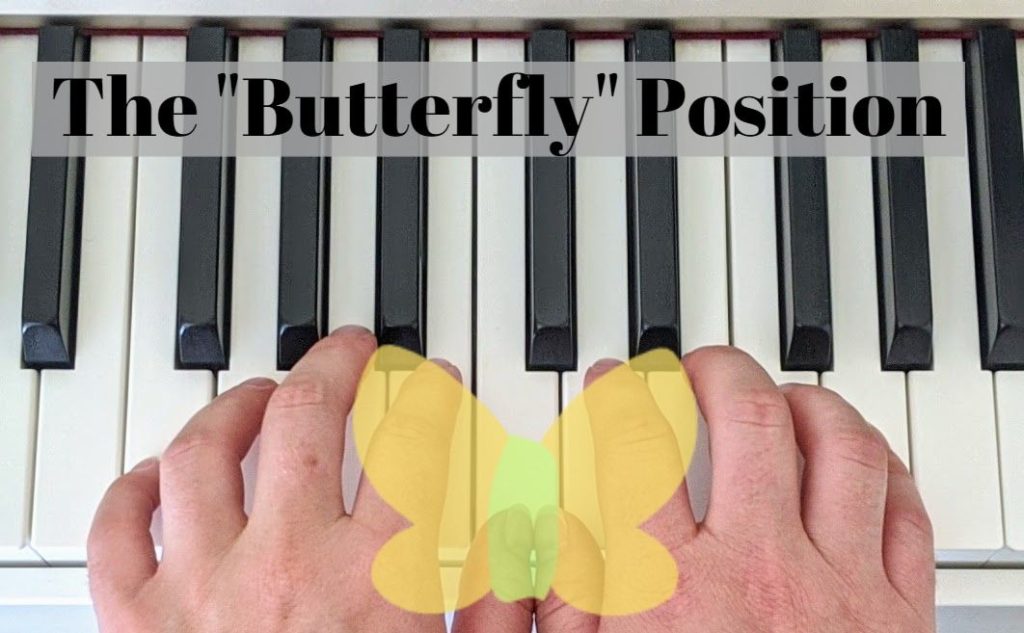
Middle C uses less keys than some of the other positions, which is why it is used at the beginning of learning piano. You actually won’t use this position for very long before you grow out of it. It isn’t very common to use the middle C hand position any longer than at the very beginning stages of learning the piano.
The C Hand Position on the Piano
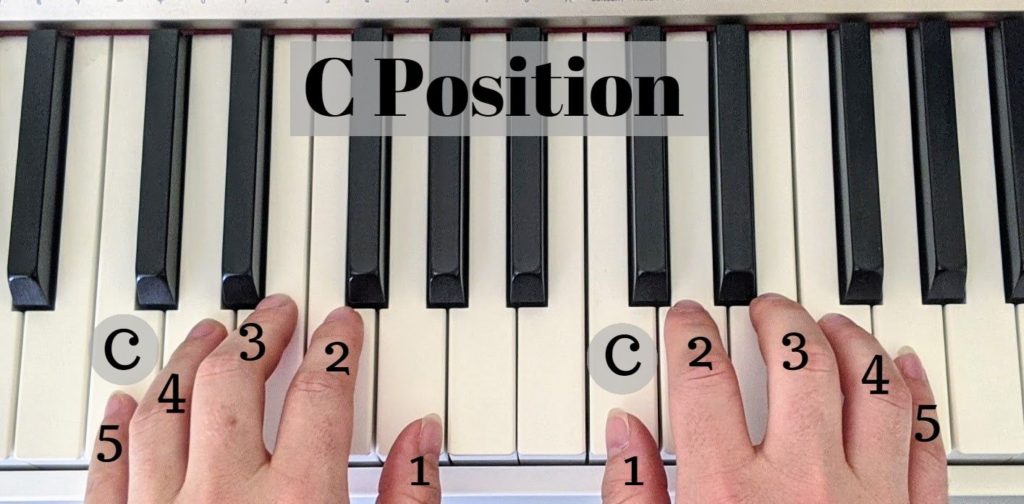
Beginner students will likely have many songs that begin with your hands on the C hand position. If you recall the finger numbers of each hand, then the placement is easy to distinguish.
In the C position, you will place your pinky, or finger number 5 of the left hand on C. Fingers number 4, 3, 2, and 1 will be placed on the white keys immediately following. Finger 4 on D, finger 3 on E, finger 2 on F, and finger 1 on G.
In the C position, the right hand will be place beginning with the thumb on C. Finger 2 will be on D, finger 3 on E, finger 4 of F, and finger 5 on G.
It is called the C position because both hands are placed in order to easily access the C scale (C – D – E – F – G – A – B – C). Thus, you will most likely be using the C position when your music is in the key signature of C. The C key signature has no flats or sharps, so you will only be using the white keys in the song, unless otherwise specified.
The G Hand Position on the Piano
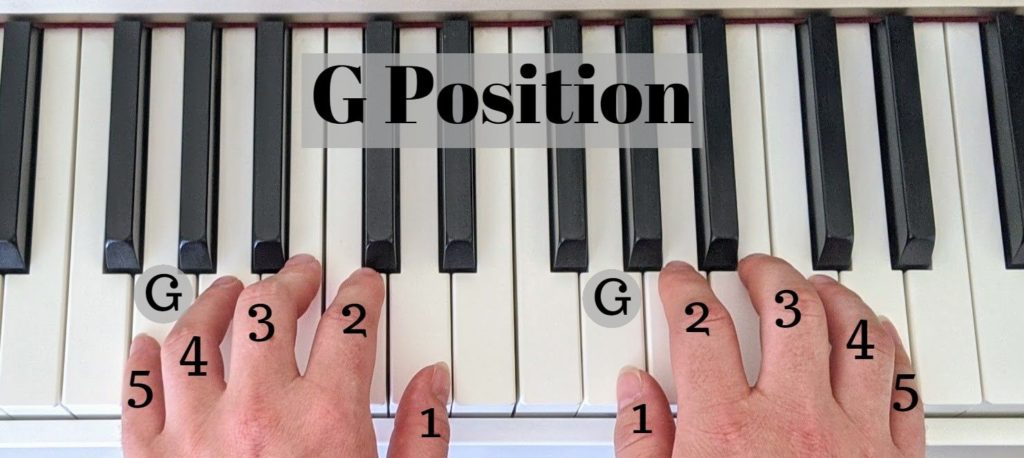
Just like with the C hand position, the G hand position is placed where your hands can easily access the G scale. As such, the thumb of the right hand will be placed on a G just up from middle C, and each finger of the right hand on the white keys to the right of the G.
The left hand will begin with finger number 5, your pinky finger, on G as well. Then each finger on the keys next to G.
If you are playing in the G position, then you will likely be playing your music in the key of G (G – A – B – C – D – E – F# – G). The key of G has one sharp.
The Secret to Finding Other Hand Positions on the Piano
In order to find any other hand position on the piano, you can identify the key signature, then place your hands according to the key signature. F position would be in the key of F and you put your hands on the piano starting with the right hand thumb on F and the left hand pinky on F. To find the A position for the key of A, place your hands with your right hand thumb starting on A, and the left hand pinky starting on A.
The same pattern exists for any key signature that you will be playing in, whether major or minor.
Usually, the hands will be placed with the right thumb and left pinky on an A for A minor. Or on E for E minor.
How do you know the key signature of the song? The key signature is found right at the beginning of the song, as sharps or flats are shown on the grand staff. Generally, you will learn more hand positions as you graduate into more advanced key signatures.
Related Articles:
It’s helpful to learn your scales as you progress from one position to the next! You can check out How to Practice Piano Scales: Everything You Need to Know.
Learn the key names, in this easy to remember way at Piano Key Names: An Easy Way to Learn.
Check out some online lessons at Top 6 Online Piano Lessons and What Each Does Best.
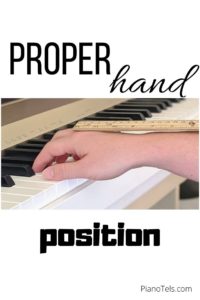
Tel loves her life as a piano player, a piano teacher, and a mom. Amid piano blogging, piano teaching, and piano playing, she loves a chance to fit in a good exercise class, volunteer at her kids’ school and at her church, and go on long dates with her husband. Full bio at About Tel.



I would like to use some of your images of proper piano hand position in an e-book course I am writing. Is that possible? Is written credit enough or is a fee involved?
Wonderful post on hand positioning. Good hand placement is essential for all Pianists.
Not only will it maintain healthy habits, but it could also assist in technique and the speed of learning. Bad habits will lead to pain in joints and muscles throughout the entire body, leading to less practice over time and could cause frustration. Piano fingering needs to be precise everytime.This topic is also covered on our website Teds-list. If you have the time, please check it out and let us know what you think.
Kindest regards
Mo
Why can’t you tell us where F position is?
Finger 1 on the right hand would start on F and finger 5 on the left hand would start on F for F position. Remember that F position will have a Bb!
Don’t put numbers or note names on the fingers. It only promotes looking down. Positions change.
You are saying pretty much what my first teachers said. My current teacher is making my fingers dance on the keyboard.
E.g. playing Noona’s Boogie Blues:
* Left hand is on C3 and F2. It starts as you describe. I raise my wrist but keep my finger tips near the keys. Then the fingers lift away from the keys as my wrist bends up,, while moving down. The first FC is stacatto, 5-1 are are used to bounce off the keys. The second FC is legato. My wrist sinks so that the top of my wrist is a bit below the top of the keys.
Wrist rises some, and I transfer the weight frome 5-1 to 3 on the Ab, then transfers again to the A. Thinking of playing by weight transfer makes for clean legato with no overlap.